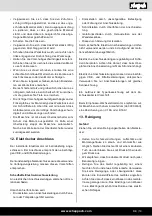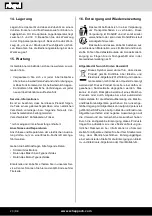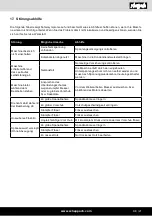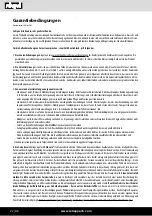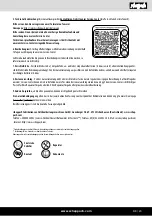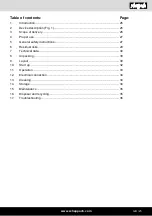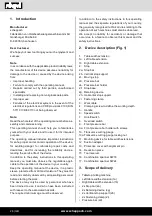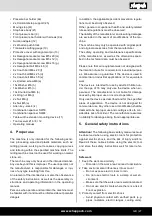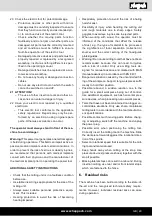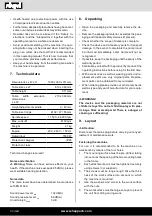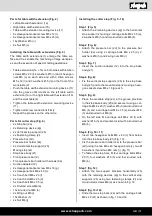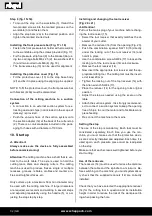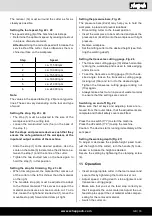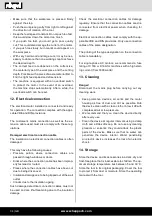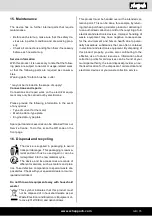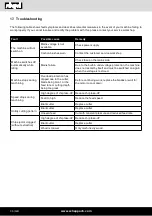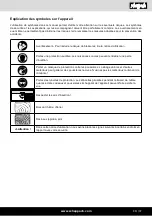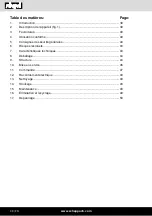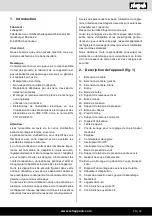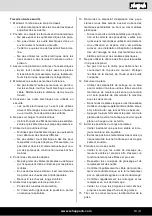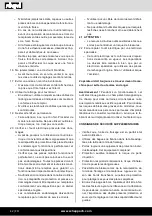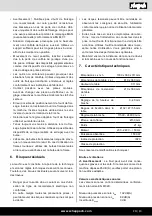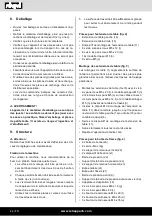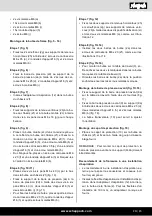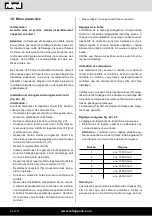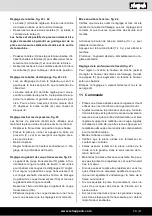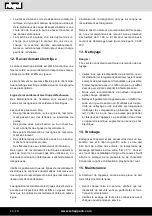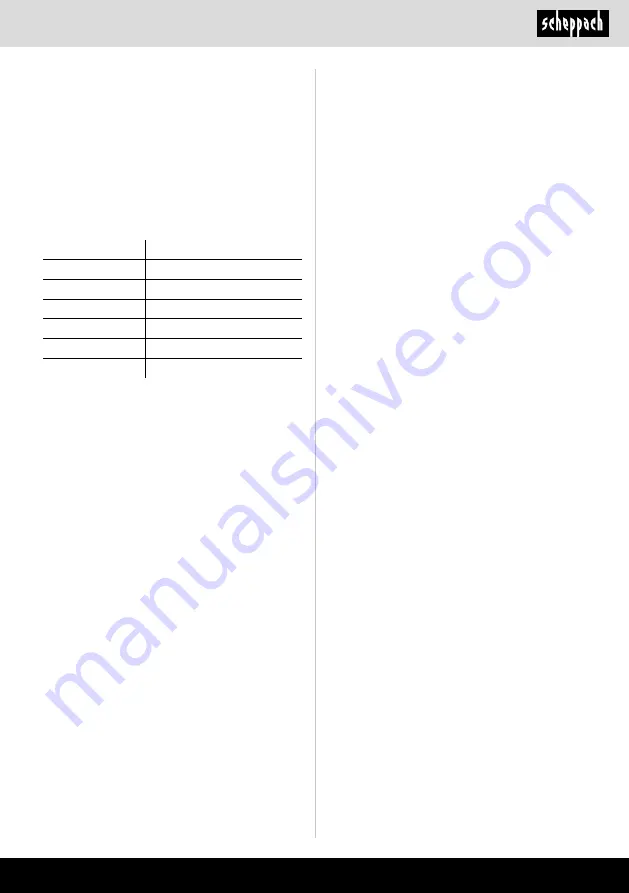
www.scheppach.com
GB | 33
Setting the pressure bars, Fig. 25
The pressure bars (9+2d) may help you to hold the
workpiece in place and prevent kick-back.
• Drive milling cutter to the lowest position
• Insert the workpiece to be machined and press the
pressure bar (9+2d)A onto the workpiece with light
pressure.
• Remove workpiece.
• Set the milling cutter to the desired height (see: Set-
ting the working depth).
Setting the transverse cutting gauge, Fig. 26
• The transverse cutting gauge (10) slides horizontal-
ly along the worktable and is used to make edging
and mitre cuts.
• To set the transverse cutting gauge (10) to the de-
sired angle, loosen the transverse cutting gauge
locking nut (10a) and turn it to the desired angle.
Tighten the transverse cutting gauge locking nut
(10a) again.
• Always make a test cut on a piece of waste material
to ensure that the settings are correct.
Switching on and off, Fig. 22
Make sure that all keys and adjusting tools are re-
moved from the router table, that the adjustments are
complete and that all safety covers are fitted.
Press the on switch (7/”I”) to start the machine.
Press the off switch (7/”0”) to stop the machine.
Caution: The device starts running immediately at the
set speed.
Setting the working depth (Fig. 27)
To adjust or decrease the spindle height (used to ad-
just the height of the cutter), turn the handle (5) to de-
crease or increase the height as desired.
Secure the setting by tightening the clamping screw
(4).
11. Operation
• Insert an appropriate cutter in the tool receiver and
secure this by tightening the tool receiver nut.
• Adjust speed, cutting depth, stop alignment and
transverse cutting gauge.
• Make sure that you set the feed stop correctly so
that it supports the uncut material. Adjust the out-
feed stop to support the cut material while compen-
sating for the removed material.
• Switch the cutter on.
The reducer (14) must surround the cutter as far as
closely as possible.
Setting the tool speed, fig. 22 + 28
The speed setting (6) of the machine has 6 steps.
• Determine the optimum speed by making a test cut
in a piece of waste material.
Attention:
Using the correct speed will increase the
service life of the cutter.
It also influences the ma
-
chined surface on the workpiece.
Step
Speed
1
ca. 11,500 rpm
2
ca. 13,000 rpm
3
ca. 15,500 rpm
4
ca. 18,000 rpm
5
ca. 21,000 rpm
6
ca. 24,000 rpm
Note:
The values in the speed table (Fig. 28) are only guide-
lines. These can vary depending on the tool and type
of wood.
Setting the stop, Fig. 23 + 24
• The stop (1) must be adjusted to the size of the
workpiece and the cutting tool.
• Loosen the two knurled nuts (f+e) on the back of
the stop (1).
Set the stops and pressure devices such that they
ensure the safe guidance of the workpiece at the
input and output section of the machine.
• Slide the stop (1) to the desired position. Use the
scale on the table (3) to determine the distance be-
tween the stop (1) and the centre of the cutter.
• Tighten the two knurled nuts on the back again to
hold the stop (1) in this position.
Setting the stop for trimming, Fig. 23 + 24
• When trimming wood, the material that comes out
of the cutter on the left is thinner than the material
on the right.
• The movable stop (2c) must be adjusted to adapt
to the thinner material. This serves to support the
material and ensures a more accurate cut. To do
this, loosen the right-hand knurled nut (f), move the
movable stop (2c) forward and clamp it tight.

